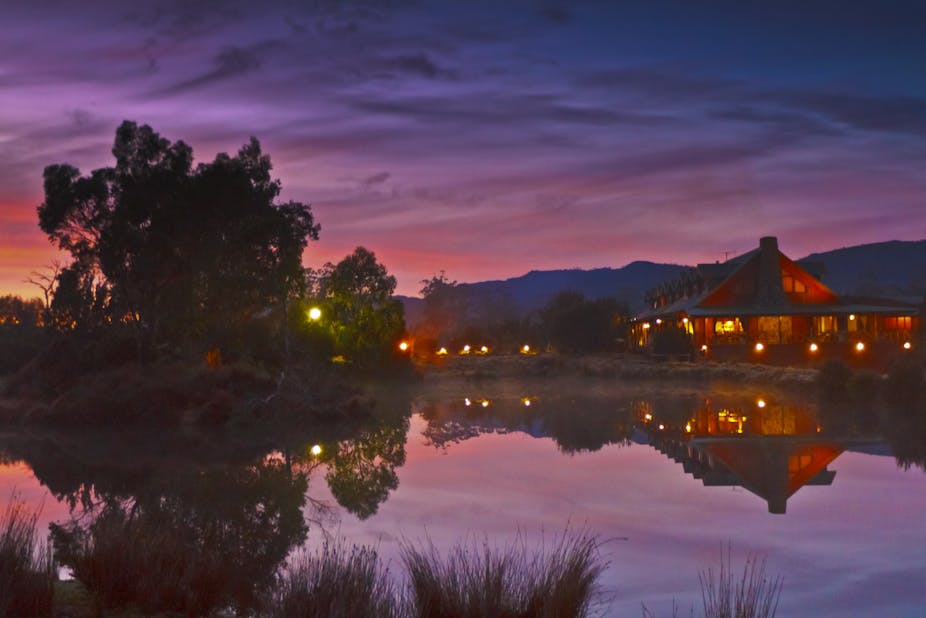While some Australian states are winding back protection for national parks, Victoria is opening up nearly two-thirds of park areas for tourism. Under the plan nature-based tourism ventures will be granted 99 year leases of public land.
The plan has met with opposition from environmentalists. But is tourism development in national parks really such a bad idea?
In most Australian cities you can find old churches that have been retrofitted into gym, cafes and quirky homes. This is an inevitable consequence of changed demographic and social circumstances that has seen a collapse in church attendance. If we don’t don’t do something about engaging visitors to national parks, the same fate may await.
There are two reasons why opposition to tourism in parks is counterproductive. One, tourism is key to creating support for an institution that can be seen as old school and dull by younger generations. Second, opposition creates the caricature that nature conservation is antithetical to any sort of wealth creation.
We can see a couple of examples in my home state, in the Tasmanian Greens opposition to a tourist development in a disused 1930s hydroelectric structure at Lake St. Clair, or the development of commercial tours on the proposed three cape walk on the Tasman Peninsula. Likewise, there has been rigid opposition to many outdoor activities within national parks, such as horse riding.
Last year the Greens tourism spokesman was quoted as saying “national parks were set up to protect natural values, not private profits”. But this sort of thinking alienates people from national parks who otherwise could become strong advocates.
It’s not just tourism either. Overbearing regulation of scientific research programs in national parks limits their use of parks as ecological laboratories and has alienated many scientists – working in parks is often seen as too much trouble. This is a lose-lose situation because research activities create knowledge about the natural and cultural heritage.
Such knowledge adds value to tourist experience, and provides essential data for evidenced based management.
National parks are designed to conserve whole landscapes. Indeed, one of the earliest motivations for national parks was the preservation of scenery. In Tasmania the precursor the National Parks Service was the Scenery Preservation Board. Such a mission is often belittled as unsophisticated and anachronistic. But the landscape is one of the most immediate experiences visitors have of a national park.
It takes much more time and motivation to appreciate the details of natural systems such as vegetation patterns, landforms and their evolution, and biodiversity. It is therefore a dangerous misapprehension to see the primary mission of national parks solely as repositories of biodiversity. This biodiversity view can be counterproductive to conservation. It has encourages the view that that national parks are fundamentally just a collection of parts, that can be traded, swapped or sold for something better.
This reductive view of national parks can also favour the quest for mathematical solutions to conservation issues that ignore the unity of natural landscapes. It’s a strategy that can result in, as Oscar Wilde might say, “knowing the price of everything and the value of nothing”.
A fixation on biodiversity has two other unintended negative consequences. Legislative weight on rare and endangered species has resulted in conservation debates being framed around a handful of “legally” important species. Other core values are sidelined. This is well illustrated by focus on Tasmanian devils in the Tarkine region of Tasmania, even though the core issue in this debate is the conservation of a temperate rain forest landscape.
The second consequences comes from the focus on the potential impacts of climate change on individual species. This can create the sense that national parks are doomed, and there is no point in conserving them. For example, the freshwater wetlands of Kakadu are threatened by rising sea levels, but this doesn’t mean we should write them off. As part of a larger, natural landscape they still hold value.
Protecting wild, beautiful places is a never-ending project. It demands a commitment to inherent values of landscape, or to use the Aboriginal English term, “country”. This essential spirit of national parks was understood by previous generations that fought to create nature conservation networks. It has resulted in policy instruments, such as the World Heritage Convention and Natural Heritage legislation, that consider impacts on entire regions.
This “ethic” of national parks can only prevail if there these are a substantial engagement by the society that is the ultimately custodian of the landscapes and social institutions. And for that, we might need to think about encouraging more people to visit.

